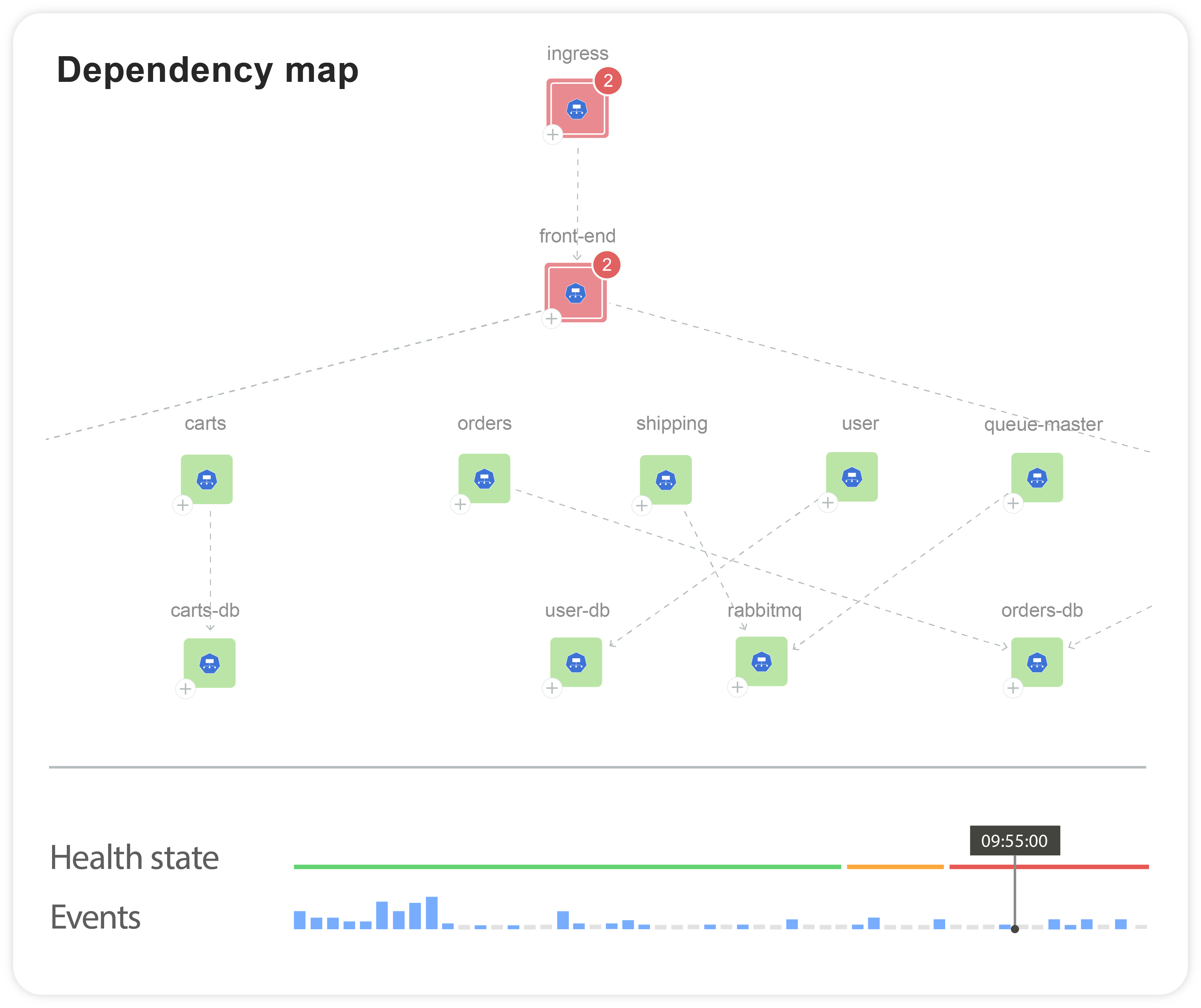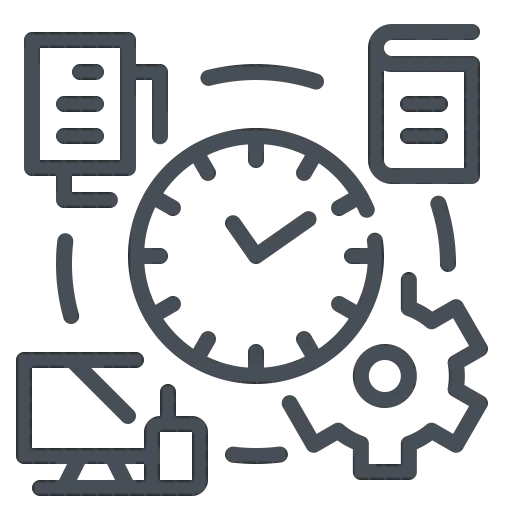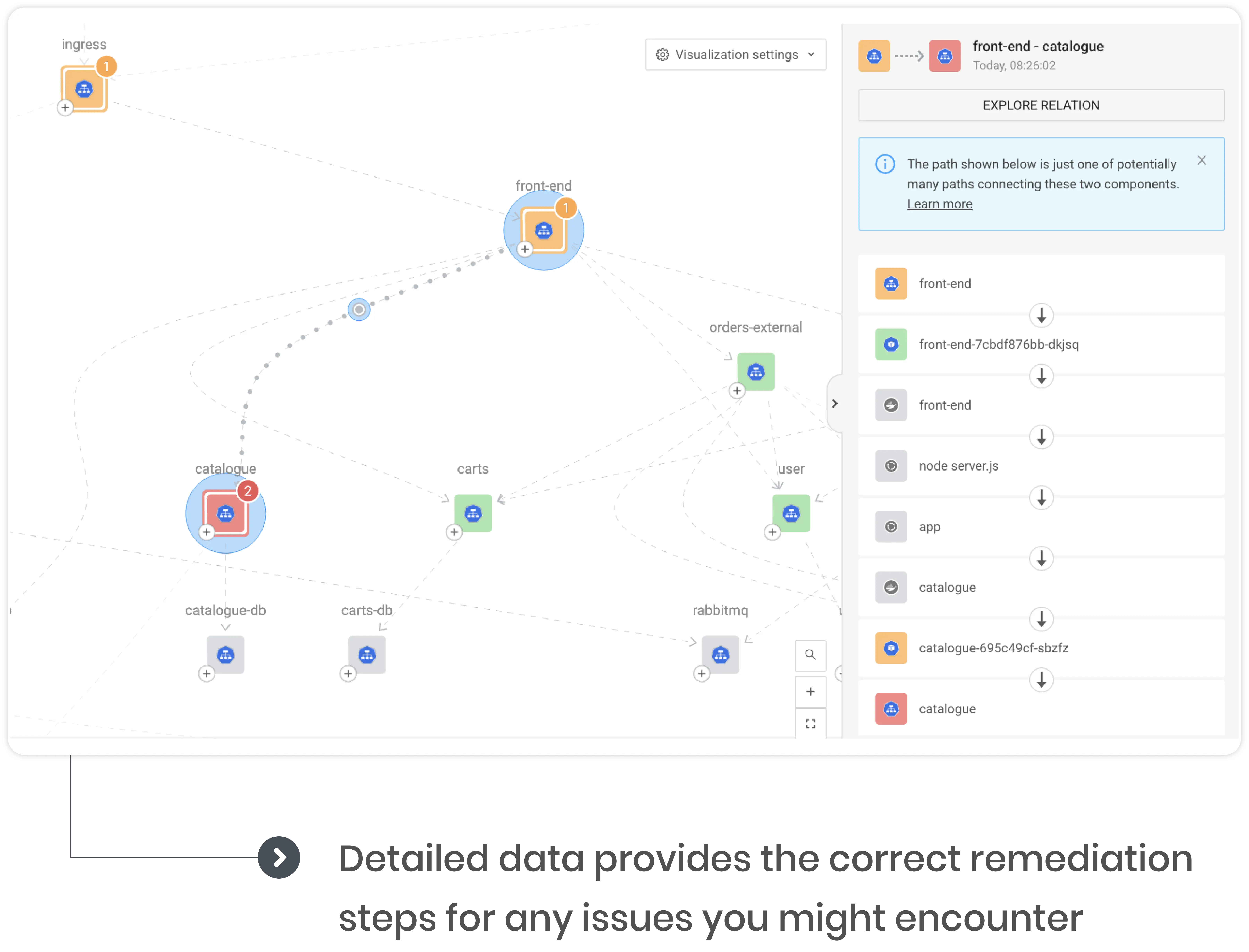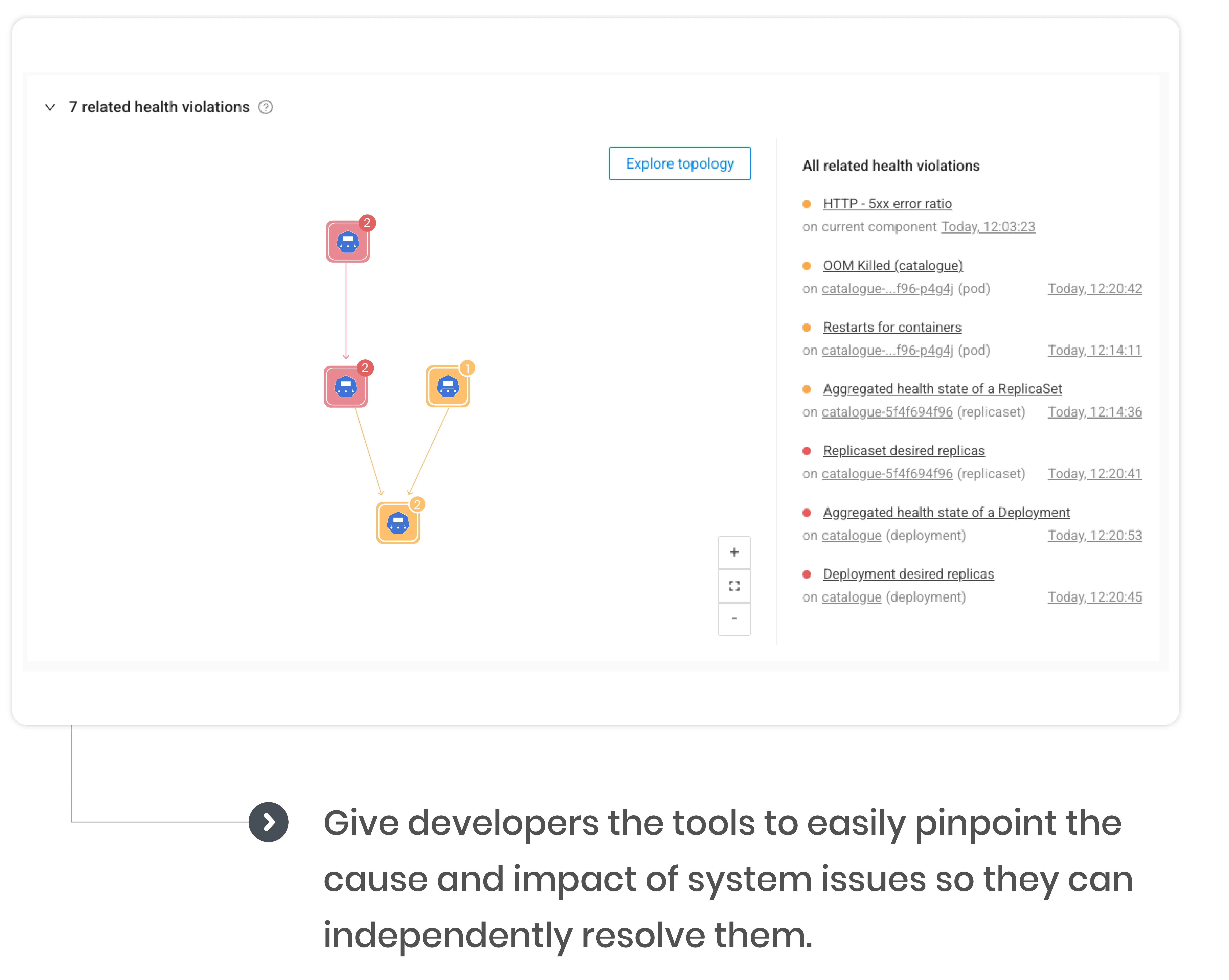

Timeline snapshots show cluster and issue evolution over time
User-friendly navigation highlights key info and enables easy exploration
Display indirect relationships, including all between-service hops
Navigate resource dependencies and critical telemetry with a single click
Automated dependency tracking eliminates the need for additional architecture knowledge
Efficient eBPF integration ensures programming language independence












